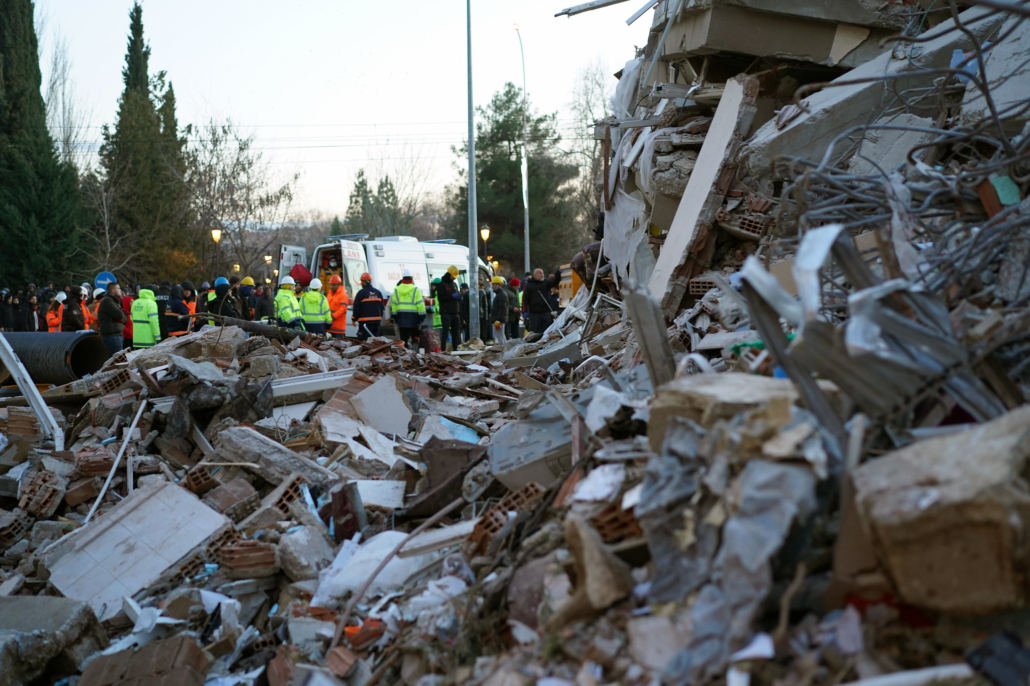Reconstruction After Hatay’s Earthquakes

The city of Hatay in southern Turkey has faced significant challenges following the magnitude 7.8 earthquake, which took place on February 6, 2023. The natural disasters have not only left the city’s infrastructure in ruins but also had profound socio-economic consequences. However, amidst the adversity, Hatay has shown remarkable resilience. In the wake of Hatay’s earthquakes, the city is making ongoing efforts to rebuild, continue delivering education to children and combat poverty.
Hatay’s Earthquakes and Their Impacts
A series of powerful earthquakes struck Hatay, a city that has received renown for its rich history and cultural diversity, leaving an indelible mark. The tremors caused widespread destruction, leaving many homes, schools and vital infrastructure in ruins. Thousands of residents were rendered homeless, and the socio-economic fabric of the city was severely disrupted. Organizations such as UNICEF collaborated with governmental and non-governmental organizations to rebuild Hatay.
With the government in close collaboration with these organizations and ministries, this endeavor encompasses the construction of resilient infrastructure throughout Hatay, as well as the restoration of public services and efforts to alleviate poverty for those affected by the earthquakes.
Reconstruction Efforts in Hatay: Rebuilding Residential Areas
In the wake of Hatay’s earthquakes, one of the most crucial aspects of the recovery process has been the meticulous reconstruction of residential areas. The tremors left many of the city’s housing stock in shambles, rendering countless families homeless. However, there are resilient efforts made in response to this crisis.
Authorities, construction crews and volunteers have come together to rebuild residential areas more resistant to future earthquakes with the Ministry of Environment, Urbanization, and Climate Change assigning this work to the Turkish Housing Development Administration (TOKI). With these efforts combined, the ministry announced on May 3 that “132,000 housing units are already under construction” emphasizing the recovery of Hatay is more than bricks and mortar, focusing on restoring the sense of security and belonging for Hatay’s residents. New homes are designed with resilience in mind, adhering to stringent building codes.
International Aid and Support for Poverty Alleviation
International aid and support have played a pivotal role in rebuilding Hatay and its ongoing struggle to alleviate poverty in the aftermath of the earthquakes. In the wake of these disasters, countries across the globe rallied to provide critical assistance to help citizens in Hatay. The World Health Organization (WHO) in Europe, for example, has provided countless aid to providing essential services as well as offering training programs “tailored to the needs of a range of survivors, with topics such as reproductive health, elder care, interpersonal communication and community engagement.”
Aid organizations such as WHO have been instrumental in coordinating these efforts, ensuring that resources reach those in need. In addition, organizations such as the World Food Programme (WFP) have directed their attention to help alleviate poverty using funds to provide food assistance to “150,000 crisis-affected families through cash assistance” as well as food provisions to “590,000” citizens. This influx of international support has not only provided immediate relief but has also contributed to the long-term anti-poverty initiatives, offering a glimmer of hope for the path to a more prosperous and resilient Hatay.
Empowering Hatay’s Communities Through Microfinance
Empowering communities through microfinance has emerged as a potent tool in Hatay’s efforts to rebuild and alleviate poverty. These small-scale financial initiatives have had a profound impact on the lives of residents who were left financially vulnerable by the natural disasters. Microfinance institutions, often in collaboration with local and international organizations, provide individuals with access to microloans and financial services tailored to their needs.
One of the primary benefits of microfinance is that it encourages entrepreneurship and self-sufficiency. In Hatay, where the earthquakes disrupted many traditional income sources, microloans have enabled individuals to start or expand small businesses. The Refugee Investment Network focuses on economic and social revival by “providing microfinance to local farmers and artisans, or facilitating tech-based remote employment” to increase displaced people’s livelihoods, “especially to respond to workforce losses due to the earthquake.”
Community-based microfinance initiatives often come with a strong focus on accountability and social cohesion. Borrowers frequently form communities to support one another, which is crucial after such devastating natural disasters. This sense of community involvement strengthens not only social ties but also instills a sense of responsibility and trust among residents, and as a result, by empowering these communities through microfinance, Hatay is not only rebuilding its physical structures but also fostering financial resilience.
Looking Ahead
In the wake of Hatay’s devastating earthquakes, the city has embarked on an extraordinary journey of recovery, resilience and hope. The efforts to simultaneously reconstruct the physical infrastructure and alleviate poverty have been inspiring. Hatay’s citizens, local businesses, and the international community have come together with unwavering determination, demonstrating the incredible power of unity in the face of adversity.
Rebuilding Hatay and its residential areas, the revival of its educational institutions, and the infusion of international aid have not only begun to mend the scars of the earthquakes but have also laid the foundation for a more robust, resilient and prosperous future. Empowering communities through microfinance, vocational training and job creation initiatives has empowered individuals to chart their paths out of poverty, while community-driven anti-poverty programs have strengthened social bonds and fostered a sense of shared responsibility.
– Mia Deniz Duru
Photo: Flickr
